Last updated on
Discover the most effective methods for removing unsightly pilling from your couch, restoring its pristine appearance and ensuring lasting comfort.
Have you ever noticed those pesky little balls of fuzz that seem to appear out of nowhere on your couch? They’re called “pills,” and they can make even the most expensive sofa look worn and shabby. But don’t worry, there are ways to get rid of them and restore your couch to its former glory.
In this article, we’ll explore some effective methods for removing pilling on couches so you can enjoy a clean, comfortable seating experience once again. So grab a cup of coffee, sit back, and let’s dive in!
Table of Contents
Identifying Couch Pilling
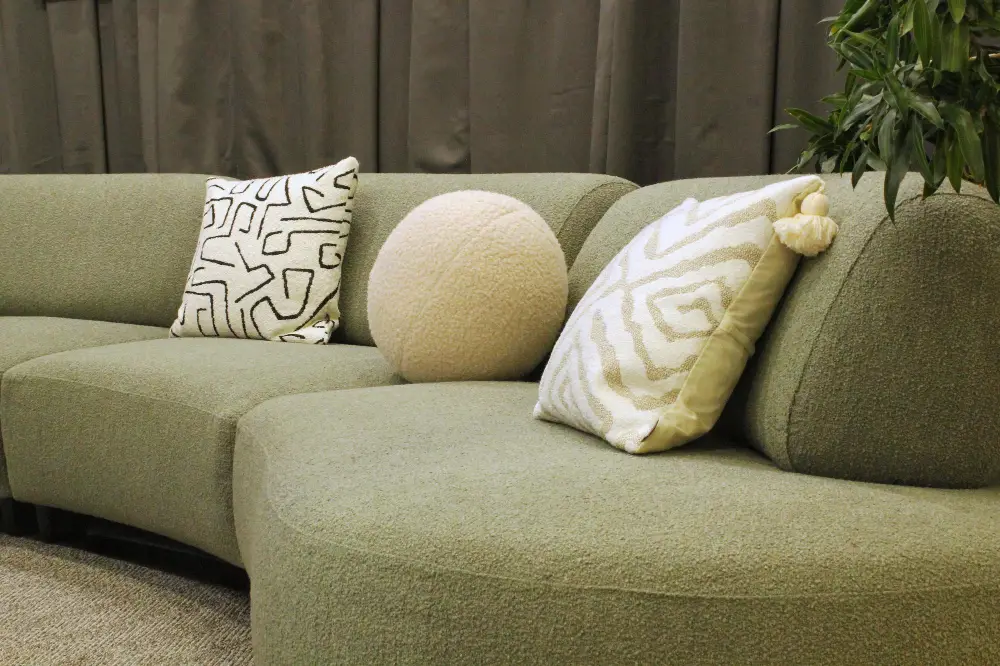
Pilling occurs when fibers on the surface of the fabric become tangled and form small balls or pills. These pills are often visible to the naked eye and can be felt by running your hand over the surface of your couch.
Pills tend to accumulate in areas that experience a lot of friction, such as where people sit or rest their arms. They’re also more likely to occur on fabrics made from natural fibers like wool, cotton, and silk.
If you’re not sure whether your couch has pilling or just general wear-and-tear, take a closer look at its surface. If you see small balls forming on top of individual threads in clusters rather than frayed edges along seams then this is most likely due to piling.
Causes of Pilling

There are several common causes of pilling on couches. One major culprit is friction – when people sit or lie down on a couch repeatedly, their clothing and movements can cause tiny fibers to rub against each other and create pills.
Another factor that contributes to pilling is the quality of the fabric itself. Some materials are more prone to developing pills than others due to their structure or composition.
For example, synthetic fabrics like polyester tend to pill more easily than natural fibers like cotton or wool.
Types of Couch Fabrics

Some fabrics are more prone to pilling than others, while some may be more durable or easier to clean. Understanding the different types of couch fabrics can help you make an informed decision when shopping for a new sofa or maintaining your current one.
Common types of couch fabrics include cotton, linen, polyester blends and leather. Cotton is a popular choice for its softness and breathability but tends to pill easily over time.
Linen is another natural fabric that offers durability but requires special care when cleaning.
Polyester blends offer greater resistance against pilling and stains compared with natural fibers like cotton or linen; however they may not be as breathable as other options.
Leather sofas provide unmatched elegance and durability; however they require regular maintenance in order to keep them looking their best. Ultimately the type of fabric you choose will depend on your personal preferences regarding comfort level, style preference and maintenance requirements.
Fabric and Pilling Resistance
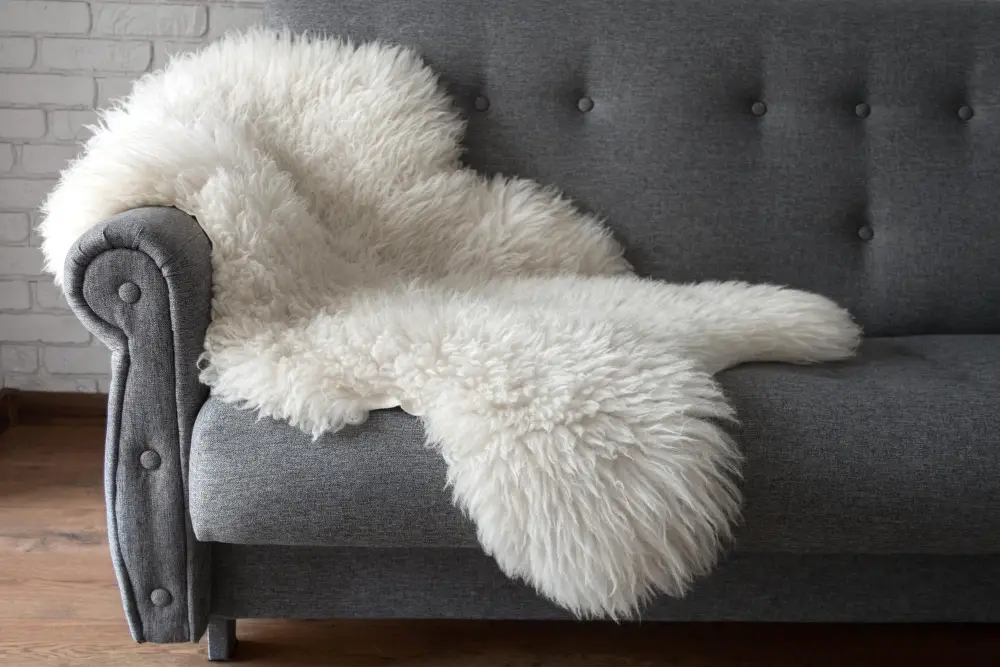
Some fabrics are more prone to pilling than others, so it’s important to consider this when selecting upholstery for your furniture.
Fabrics that have longer fibers tend to be more resistant to pilling because they don’t break as easily. Natural fibers like wool and cotton are good examples of materials that resist pilling due their long fiber length.
On the other hand, synthetic fabrics like polyester and nylon may be more susceptible since they have shorter fibers. However, some manufacturers add special finishes or treatments during production which can help reduce the likelihood of pills forming on these types of fabrics.
Couch Maintenance Tips
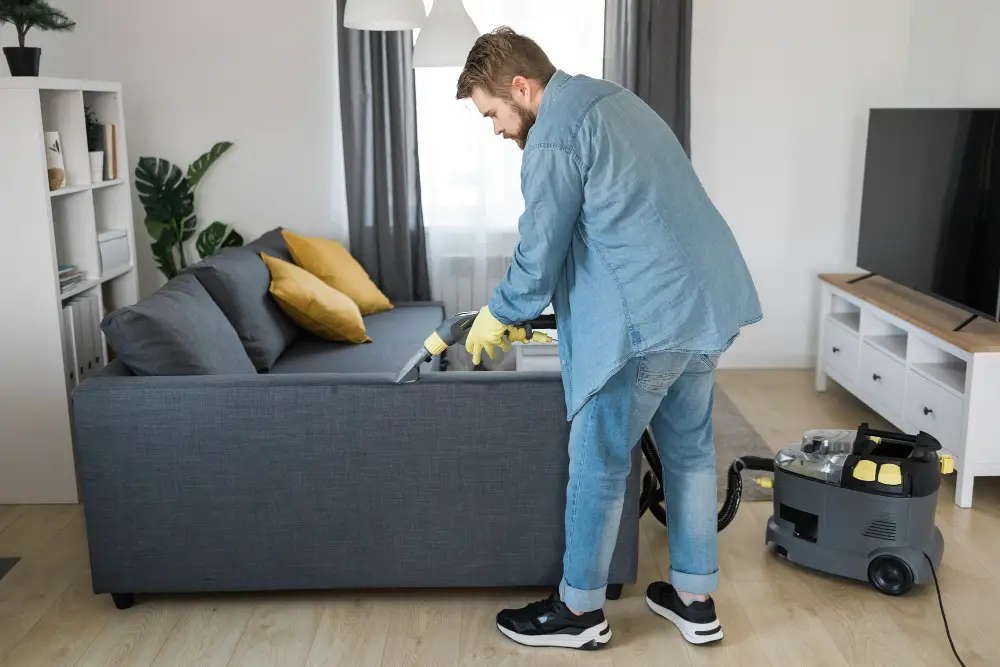
Here are some tips to help you keep your couch looking and feeling great:
1. Vacuum regularly: Use a soft brush attachment to remove dust, dirt, and debris from the surface of your couch.
2. Rotate cushions: To prevent uneven wear and tear, rotate the cushions on your couch every few months.
3. Avoid direct sunlight: Prolonged exposure to sunlight can cause fading and damage fabrics over time.
4. Keep pets off the furniture: Pet hair can contribute significantly to pilling on upholstery fabrics.
5. Clean up spills immediately: Blot spills with a clean cloth as soon as they happen; don’t let them sit or soak into the fabric.
Regular Maintenance for Couch Upholstery

This includes vacuuming the surface of the couch with a soft brush attachment to remove any loose dirt or debris that can cause friction against the fabric fibers. You should also rotate cushions regularly so they wear evenly and don’t develop lumps or indentations.
Avoid exposing your couch to direct sunlight as this can fade colors and weaken fabrics over time. If you have pets, use a lint roller or pet hair remover frequently to pick up any fur that may accumulate on your furniture.
DIY Pilling Removal Techniques
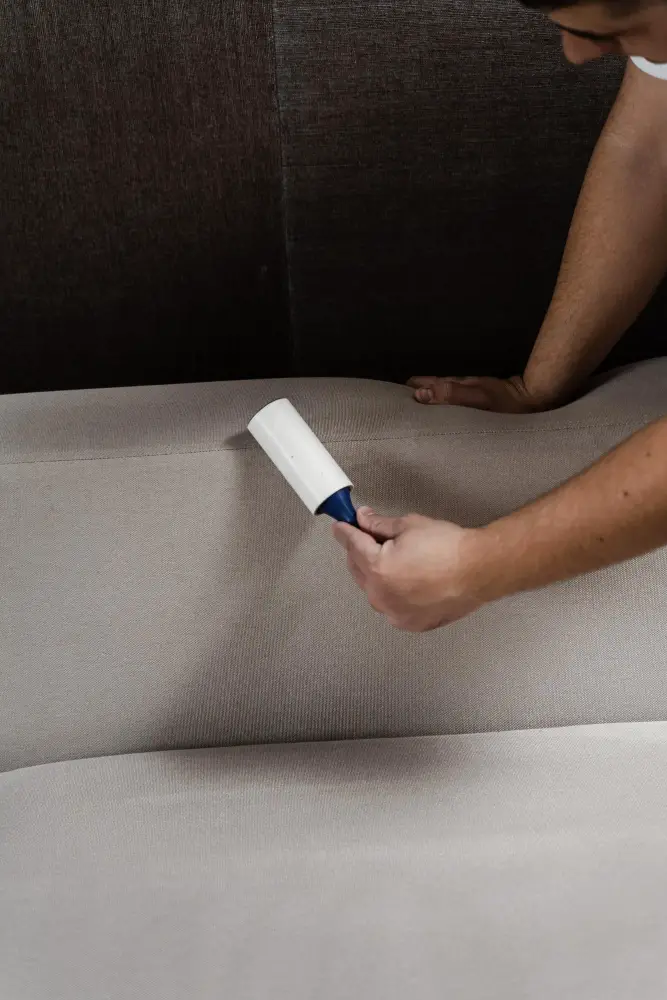
One of the most popular methods is using a fabric shaver or lint roller. These tools work by gently removing the pills from the surface of your couch without damaging the fabric.
To use a fabric shaver, simply run it over the affected areas in circular motions until all of the pills have been removed. Be sure to empty out any collected fuzz regularly during this process.
Another option is using a lint roller which works similarly but requires less effort and time than using a fabric shaver. Simply roll it over your couch’s surface until all visible pilling has been removed.
For more stubborn cases, try wrapping some duct tape around your hand with sticky side facing outward and dabbing at each pill individually until they come off completely.
Tools for Pilling Removal
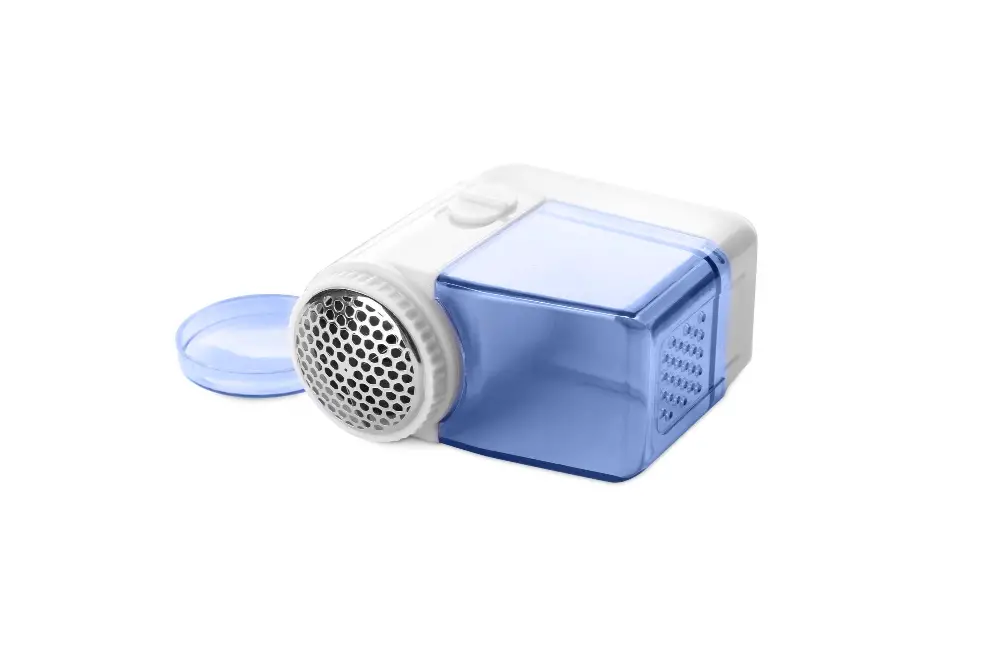
Here are some of the most effective tools for pilling removal:
1. Fabric shaver: This handheld device uses a rotating blade to shave off pills and fuzz from fabric surfaces.
2. Lint roller: A sticky lint roller is perfect for picking up loose fibers and small pills on upholstery.
3. Scissors or razor blade: For larger or more stubborn pills, carefully snip them off with scissors or use a razor blade to gently scrape them away.
4. Sweater comb: Similar in function to a fabric shaver, this tool has small teeth that grab onto pills and pull them away from the surface of your couch.
Fabric Shaver Benefits
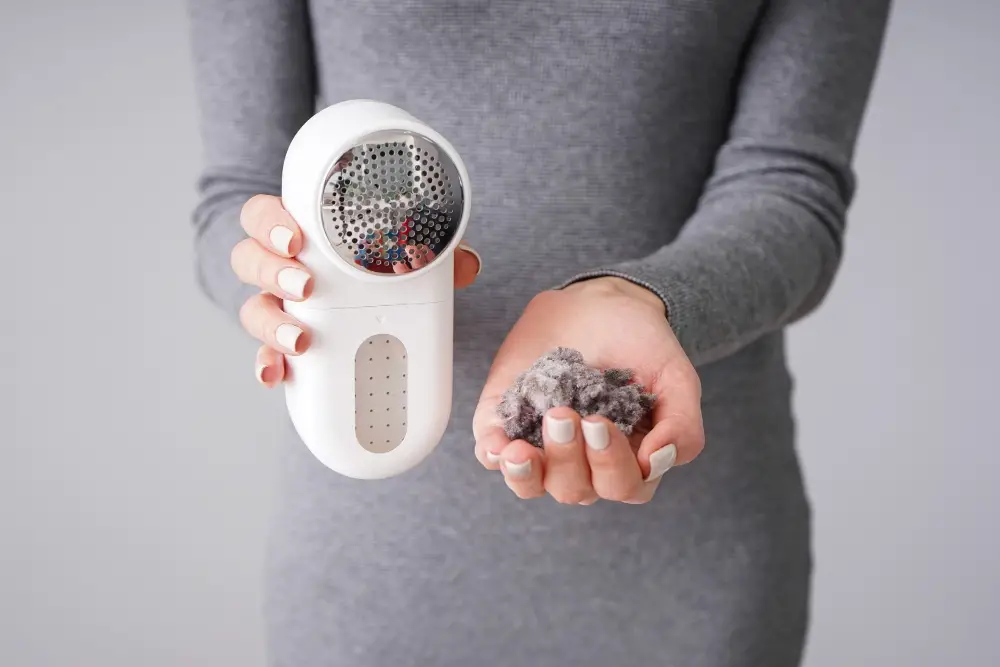
They work by gently shaving off the pills, leaving your upholstery looking clean and new. One of the benefits of using a fabric shaver is that it’s quick and easy to use.
Simply run the device over your couch, and it will remove any unsightly fuzz balls in no time.
Another benefit of using a fabric shaver is that it’s gentle on your upholstery. Unlike other methods like scissors or razors, which can damage fabrics if not used correctly, fabric shavers are designed to be safe for all types of materials.
Many modern fabric shavers come with adjustable settings so you can customize them based on the type of material you’re working with. This means you can safely use them on delicate fabrics like silk or wool without worrying about damaging them.
Using Lint Rollers
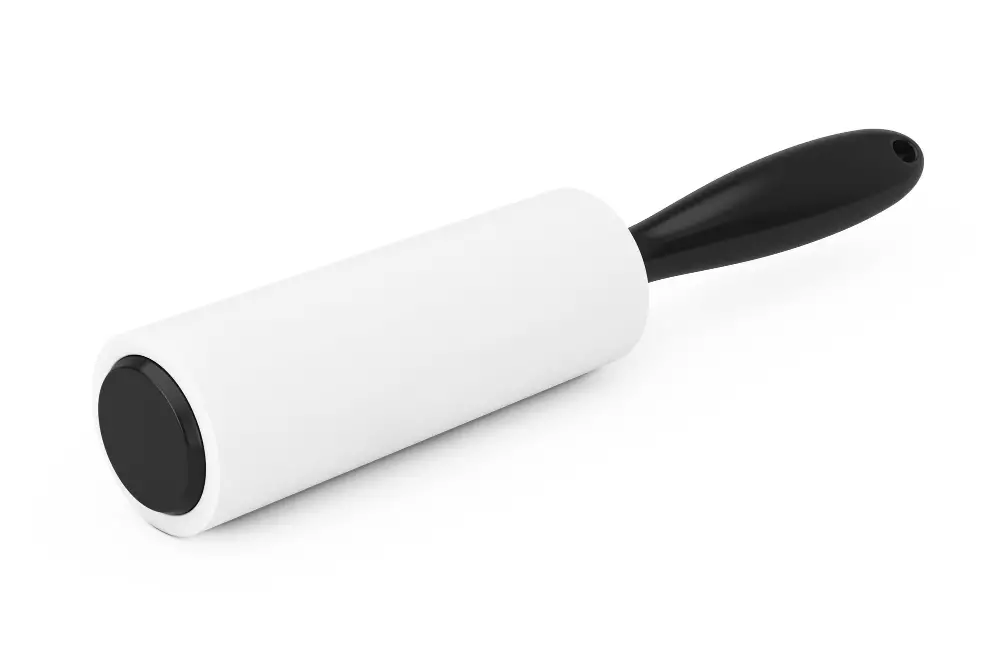
These handy tools are designed to pick up loose fibers, hair, and other debris from fabric surfaces. Simply roll the sticky tape over your couch cushions or upholstery in a back-and-forth motion until all visible pills have been removed.
Lint rollers come in various sizes and styles, including reusable options that can be washed or refilled with new adhesive sheets. They’re also affordable and widely available at most home goods stores.
While lint rollers may not work as well on larger areas of pilling or more stubborn fabrics like wool or linen, they’re still an excellent option for quick touch-ups between deeper cleanings.
In addition to removing pilling on your couches, you can also use lint rollers on clothing items such as sweaters and blankets that tend to pill over time.
How to Remove Fuzz From a Couch

One of the easiest methods is to use a lint roller. Simply roll the sticky surface over your couch cushions and backrests, pressing down firmly as you go.
The adhesive will pick up any loose fibers or pills on the fabric.
Another effective way to remove fuzz from your couch is by using tape. Wrap some masking tape around your hand with the sticky side facing outwards and gently press it onto areas where pilling has occurred.
For more stubborn cases of pilling, consider investing in a fabric shaver or pill remover tool designed specifically for upholstery fabrics. These tools work by shaving off excess fibers without damaging the underlying material.
Preventative Measures

One of the easiest ways to prevent pilling is by choosing a high-quality fabric for your couch. Look for fabrics with a tight weave and long fibers, as these are less likely to pill over time.
Another way to prevent pilling is by avoiding harsh chemicals when cleaning your couch. Stick with mild detergents and avoid using bleach or other abrasive cleaners that can damage the fabric.
Regular maintenance is also key in preventing pilling on your couch. Vacuuming regularly will help remove any loose fibers before they have a chance to form pills on the surface of the fabric.
Consider investing in protective covers or throws for your sofa if you have pets or children who may be prone to spills and stains. These covers can help protect against wear and tear while also adding an extra layer of comfort.
Preventing Couch Pilling
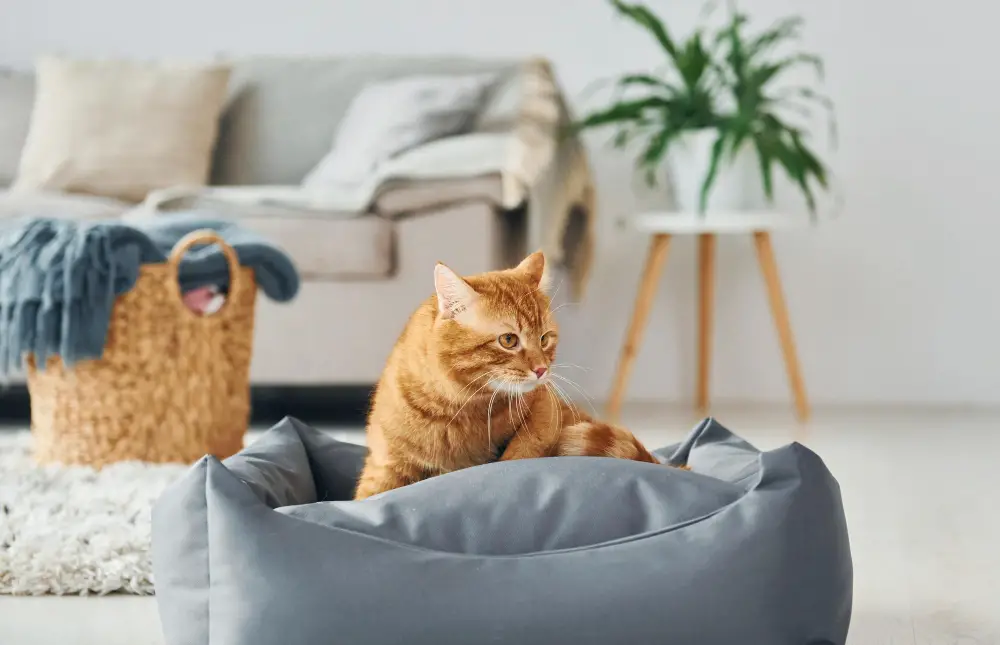
The best way to prevent pilling is by taking good care of your couch and its upholstery. Here are some tips:
- Avoid rubbing or scratching the fabric excessively.
- Keep pets off the furniture as much as possible.
- Use a lint roller regularly on areas prone to shedding or fuzzing.
- Rotate cushions frequently so they wear evenly.
- Vacuum upholstered surfaces weekly with an upholstery attachment.
By following these simple steps, you can help keep your couch looking new for longer and reduce the need for frequent cleaning and maintenance.
Couch Cover Options

They come in a variety of materials, colors, and styles to suit any decor. One popular type is the slipcover, which fits over your existing couch like a glove.
Slipcovers can be easily removed for washing or replaced if they become worn or damaged.
Another option is the throw cover, which can be draped over your couch like a blanket. These covers are perfect for adding an extra layer of warmth during colder months while also protecting against pilling and spills.
If you’re looking for something more decorative than protective, consider using decorative throws or pillows on your couch instead. These accents can add color and texture to your space without covering up the entire sofa.
No matter what type of cover you choose, make sure it’s made from high-quality materials that will stand up to regular use and cleaning.
Professional Upholstery Services
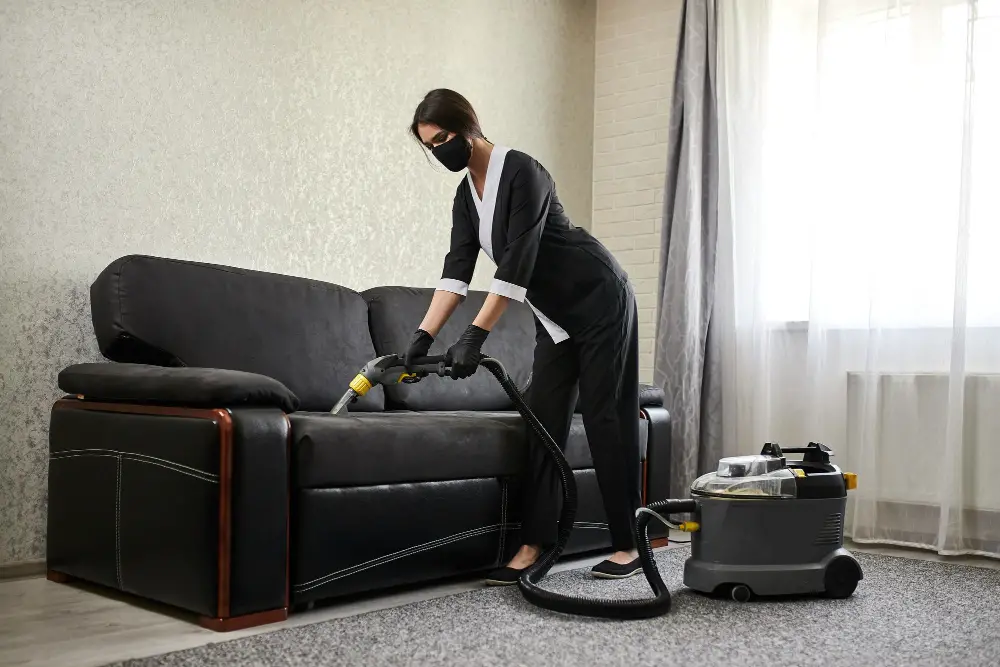
These experts have the knowledge and tools necessary to remove even the most stubborn pills from your couch without causing any damage. They can also repair any other damages that may have occurred over time, such as tears or stains.
Professional upholstery services are especially useful for those with high-end or antique furniture that requires special care. These professionals know how to handle delicate fabrics and materials without causing further damage.
While professional upholstery services may come at a higher cost than DIY methods, they offer a more comprehensive solution for restoring your couch’s appearance and comfort level. Plus, investing in these services could extend the lifespan of your furniture by years.
When considering professional upholstery services, be sure to do some research beforehand.
Repairing Damaged Couch Fabrics
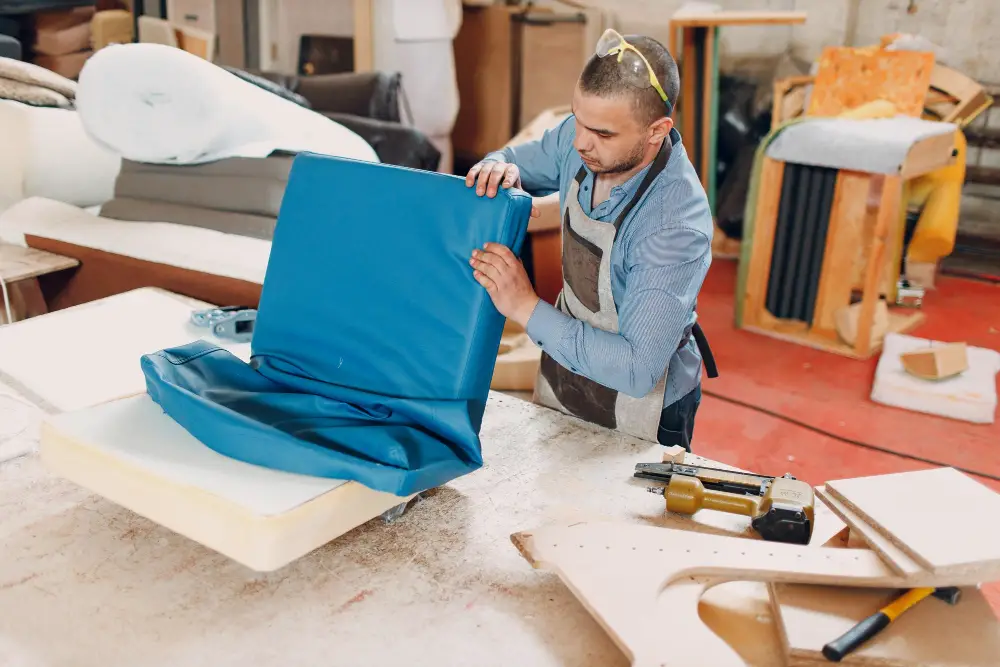
In some cases, repairing the damage can be a more cost-effective solution. If you have a tear or hole in your couch fabric that is too large for DIY repairs, professional upholstery services may be necessary.
A skilled upholsterer can replace the damaged section of fabric with new material that matches the original as closely as possible. This process involves removing any remaining threads from around the area of damage and carefully cutting out a piece of replacement material to fit precisely into place.
While this option may not always be feasible or practical depending on factors such as age and condition of your sofa or sectional; if done correctly by an experienced professional it will restore both function and appearance to your furniture piece at an affordable price point compared with purchasing new furniture altogether.
Dealing With Different Fabric Types

Different fabrics have varying levels of resistance to pilling and require different methods for removal. For example, synthetic fabrics like polyester are more prone to pilling than natural fibers such as cotton or wool.
If your couch is made from synthetic materials, you may need to be extra careful when removing pills as they can easily damage the fabric’s surface. On the other hand, if your sofa is upholstered in natural fibers like wool or cotton, you can use more aggressive techniques without worrying about damaging the material.
It’s important always to check manufacturer instructions before attempting any cleaning or maintenance procedures on your couch.
When to Replace Your Couch
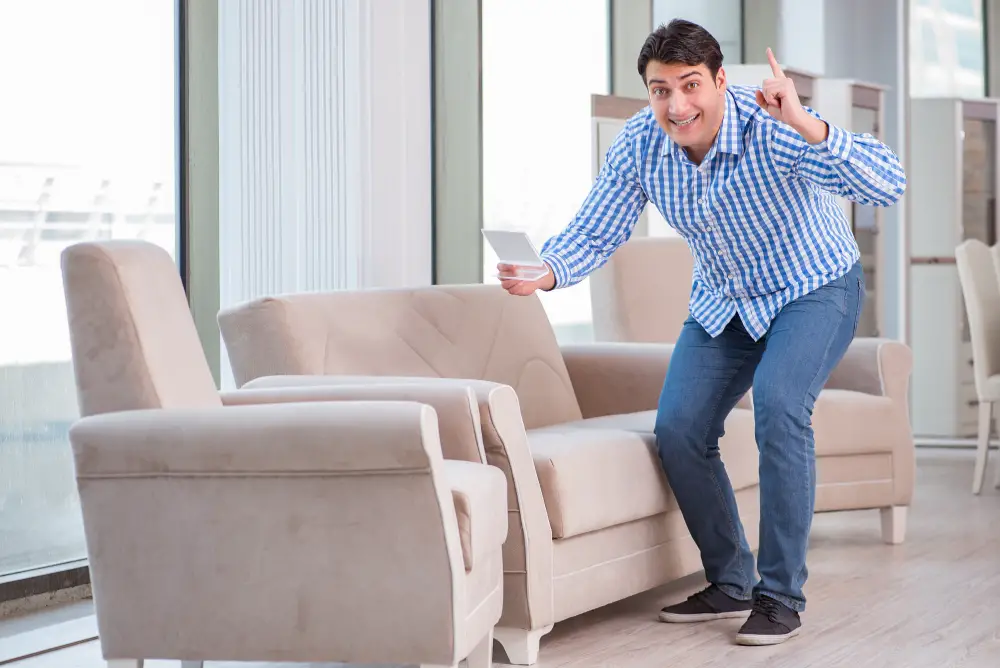
A good rule of thumb is to replace your couch every 7-15 years depending on usage and quality. Signs that indicate you need a new couch include sagging cushions, broken springs or frames, faded fabric color that cannot be restored with cleaning methods.
If you have tried everything possible but still can’t get rid of the pilling on your old sofa and are considering buying a new one – don’t worry! There are plenty of options available in different styles and price ranges. You can choose from leather sofas for durability or opt for microfiber fabrics which resist stains better than other materials.
Replacing an old sofa not only improves the look of your living room but also enhances comfort levels as newer models come with advanced features like reclining seats, adjustable headrests among others.
FAQ
Can you get rid of pilling on couch?
Yes, you can get rid of pilling on a couch by using a fabric defuzzing or pill removing tool, which is a handheld device designed for quickly and effectively removing pilling from various surfaces.
What causes pilling on couch?
Pilling on a couch is caused by the friction of fibres in the fabric rubbing together during general use, which results in loose fibres balling up.
Can pilling be fixed?
Pilling cannot be entirely fixed, but its appearance can be improved by physically removing pills using methods such as picking, brushing, or using a pill shaver.
What are the best tools to remove pilling from couch fabric?
Best tools to remove pilling from couch fabric are fabric shaver, lint roller, and a pill comb.
How to prevent pilling on couches in the first place?
To prevent pilling on couches, choose upholstery made of high-quality, tightly woven fabrics, and gently clean and vacuum the couch regularly.
Can different types of couch materials affect the formation of pilling?
Yes, different types of couch materials can affect the formation of pilling as they vary in their susceptibility to wear and friction.





